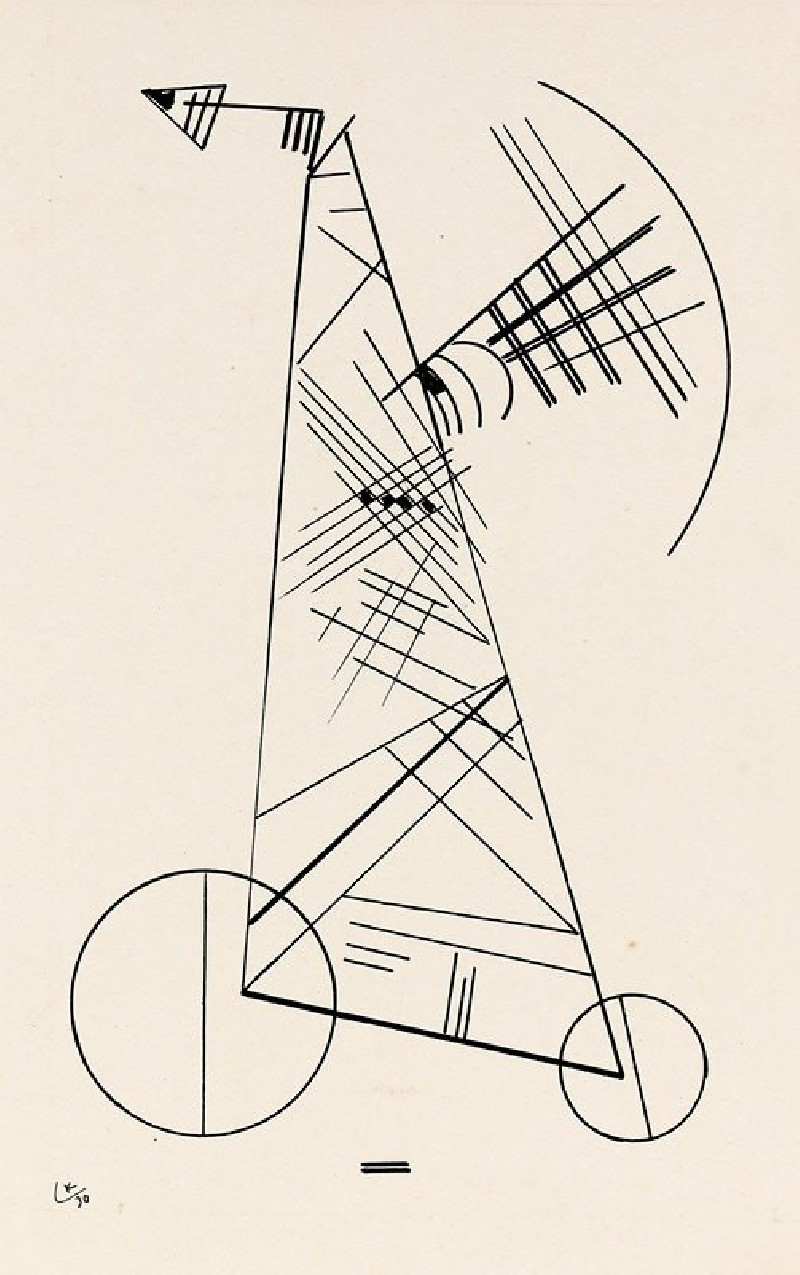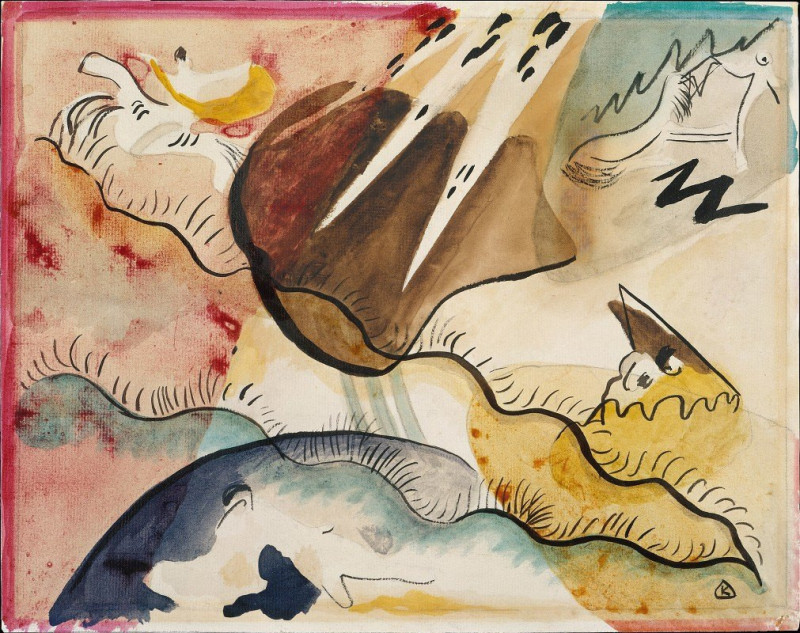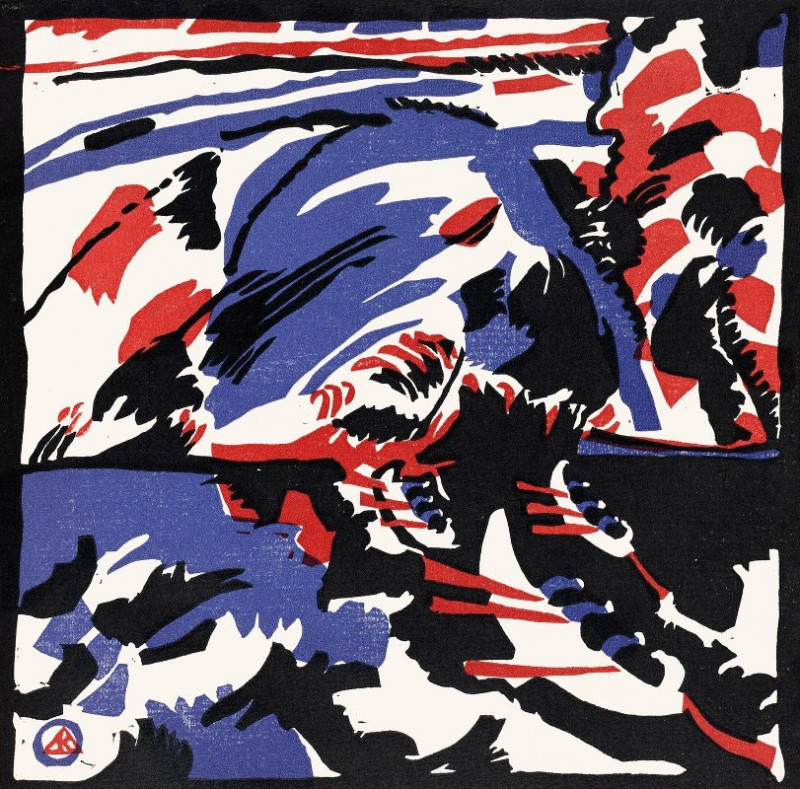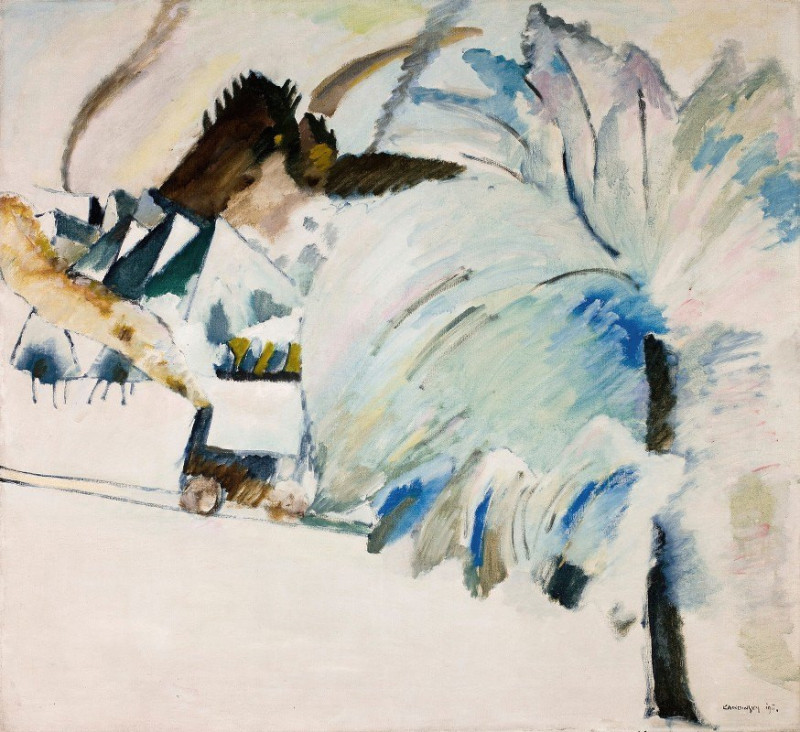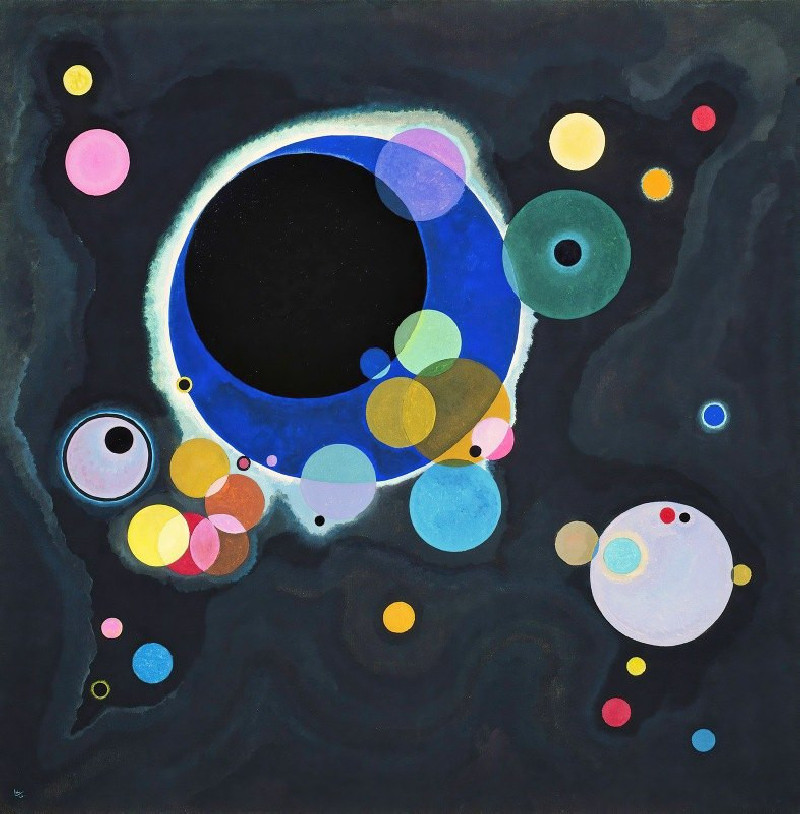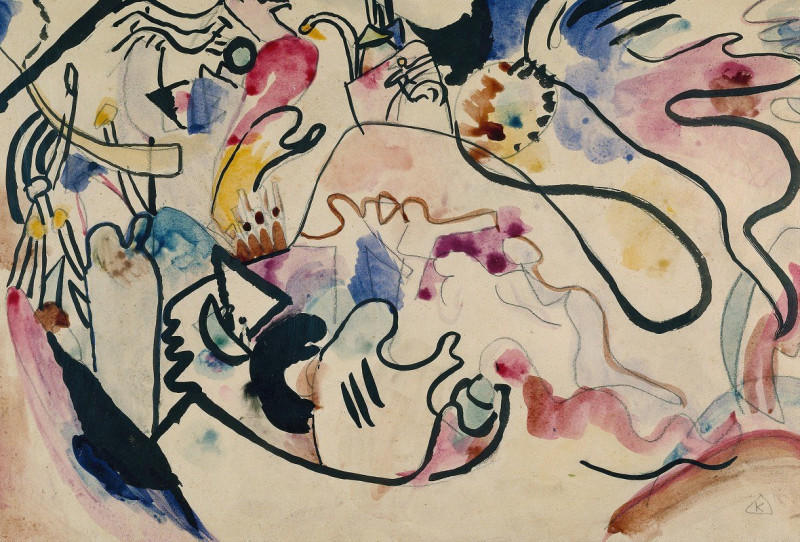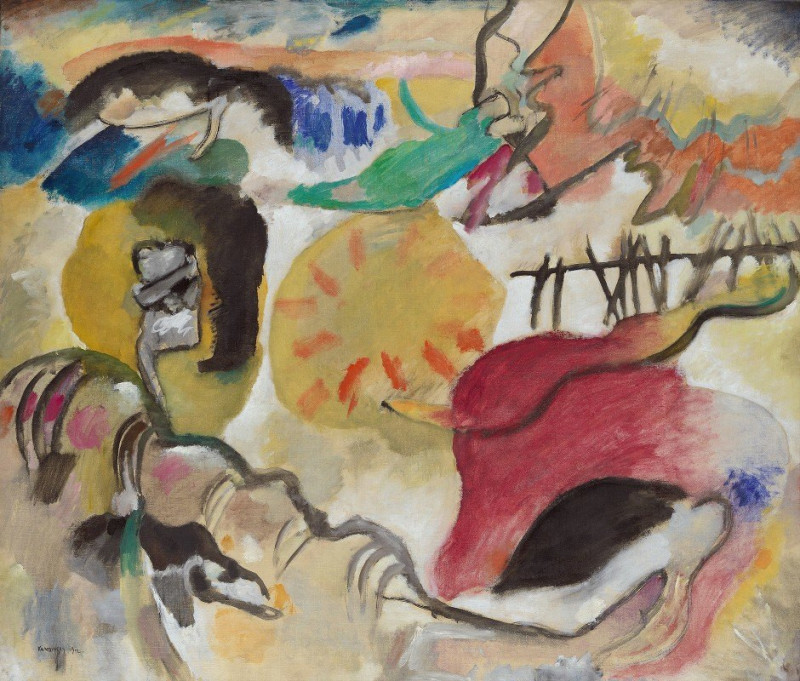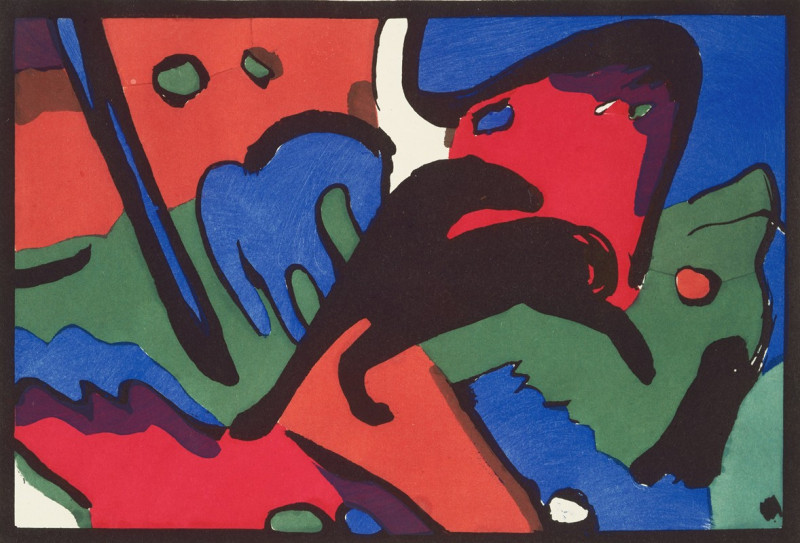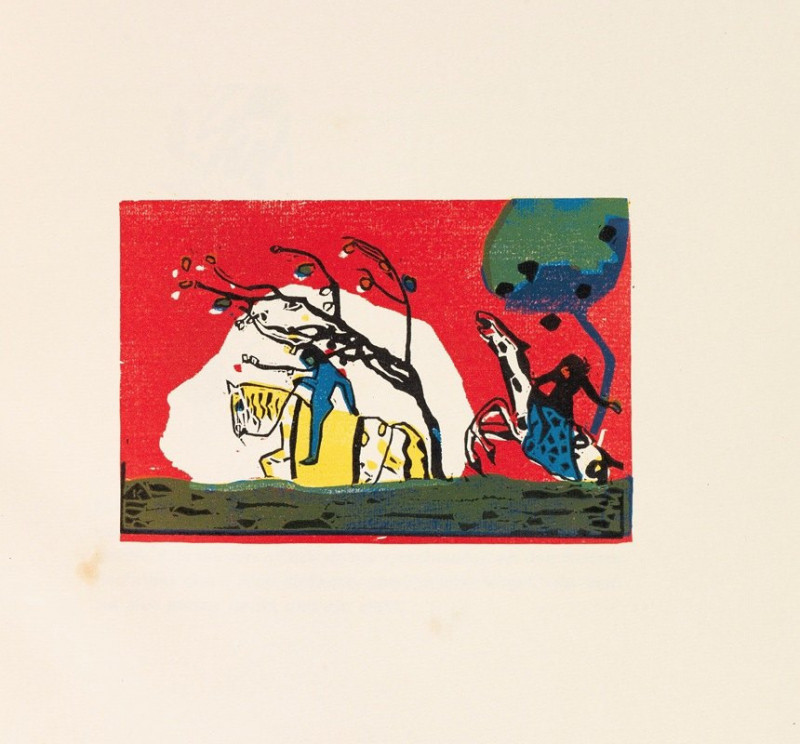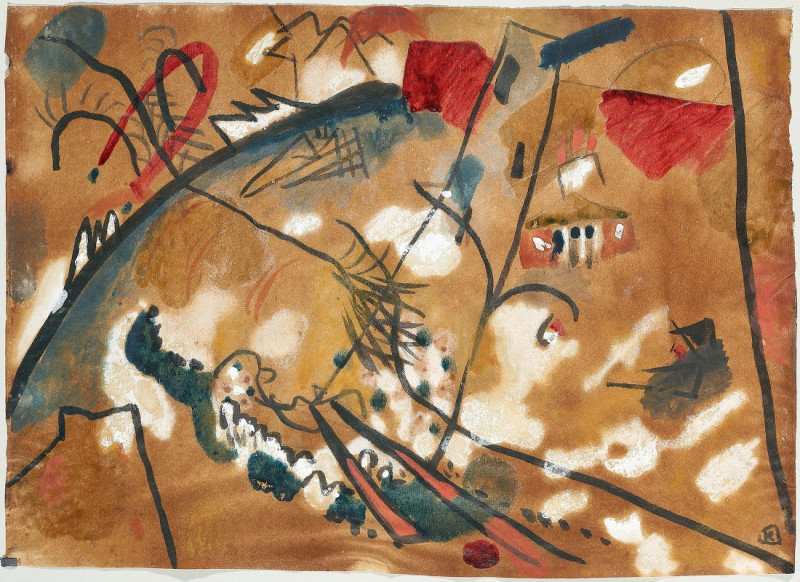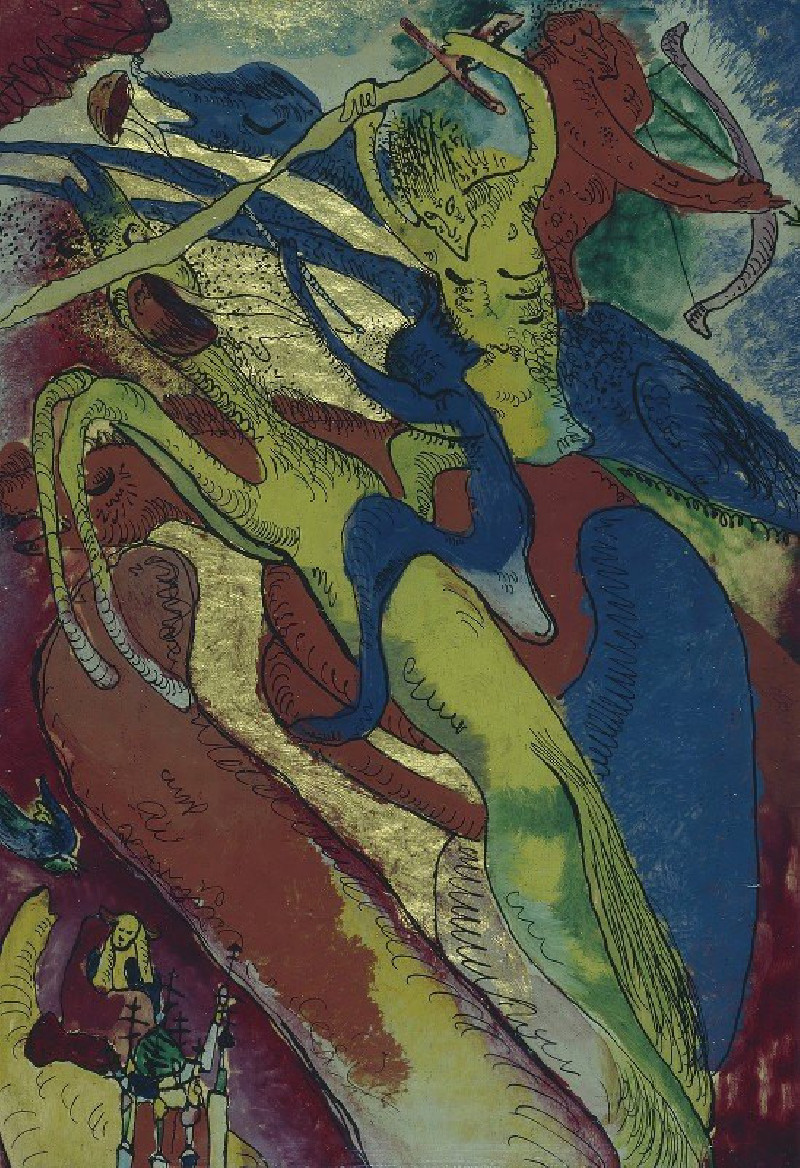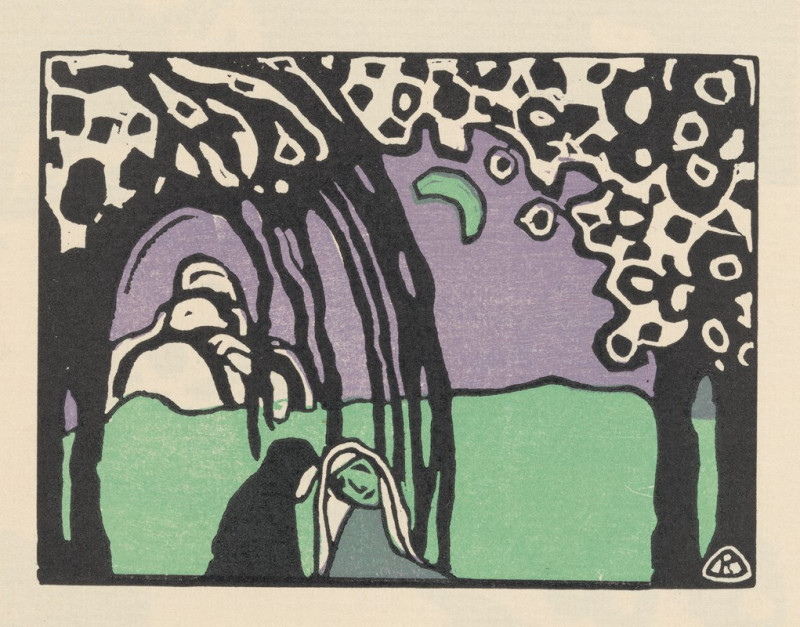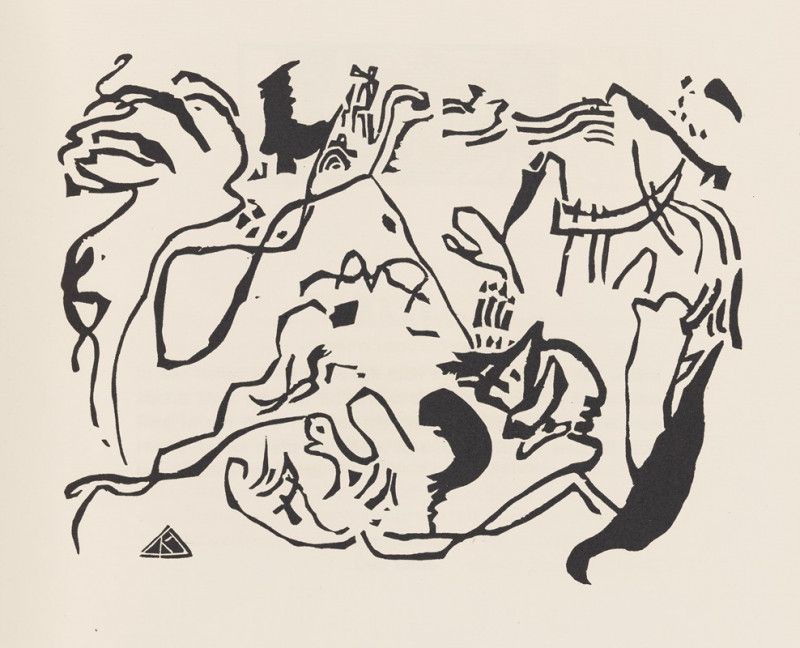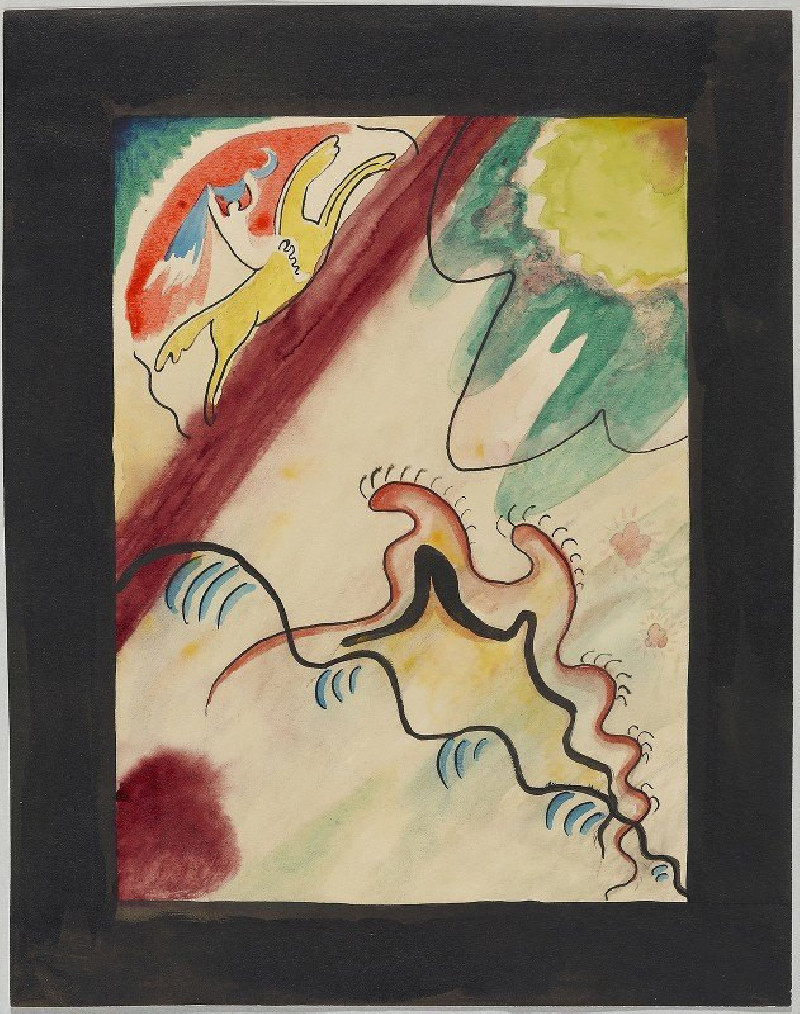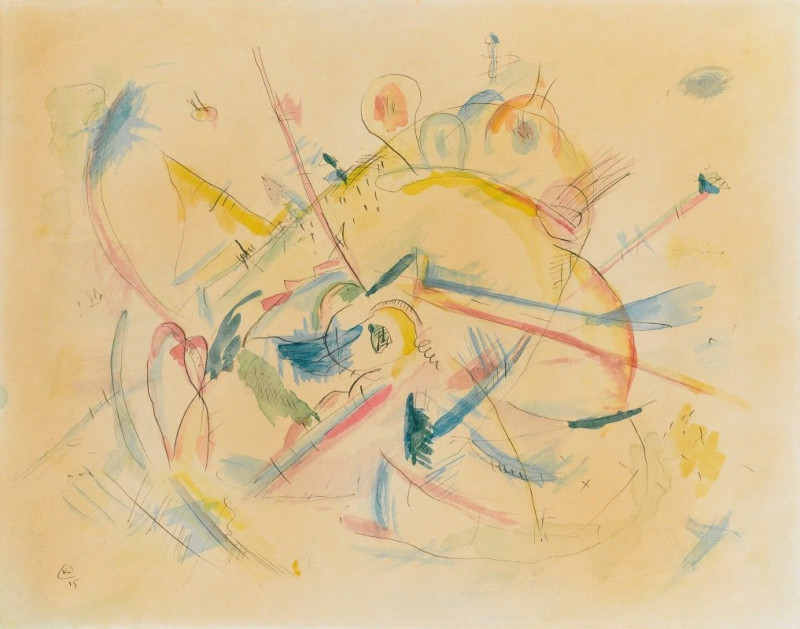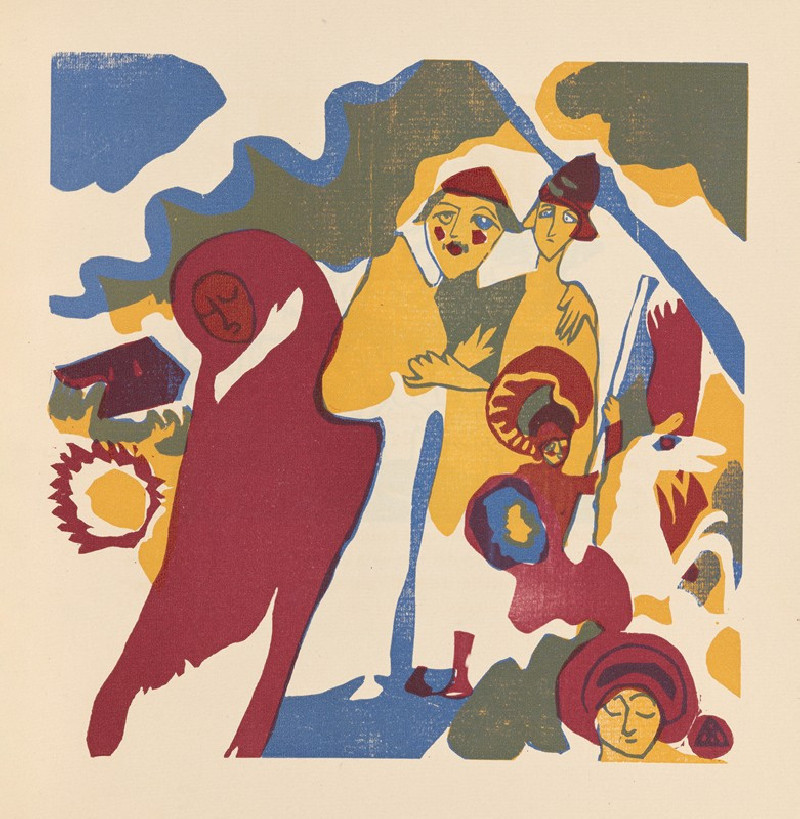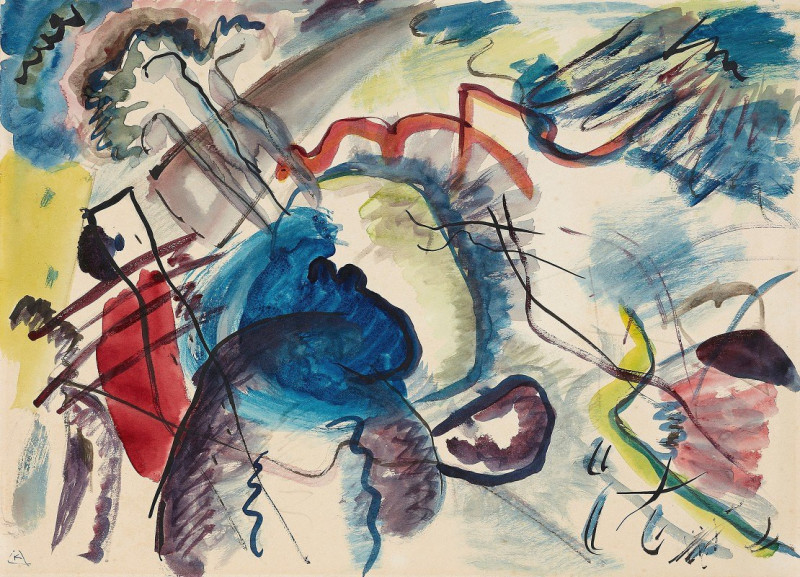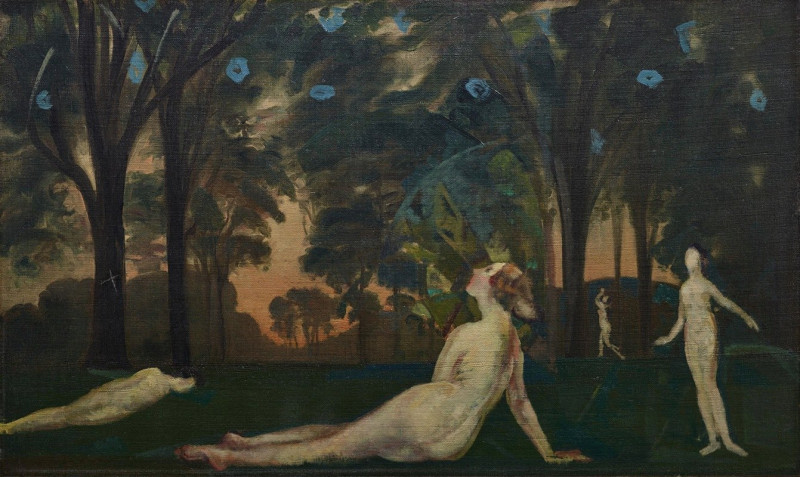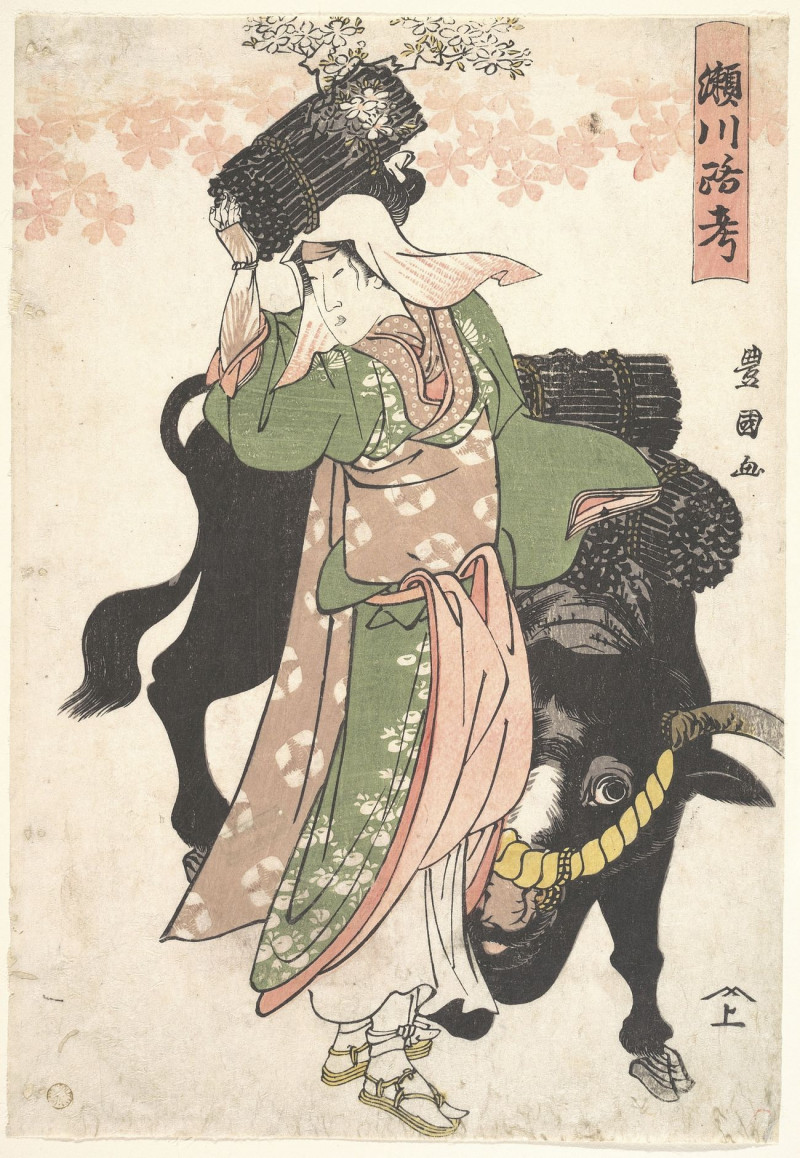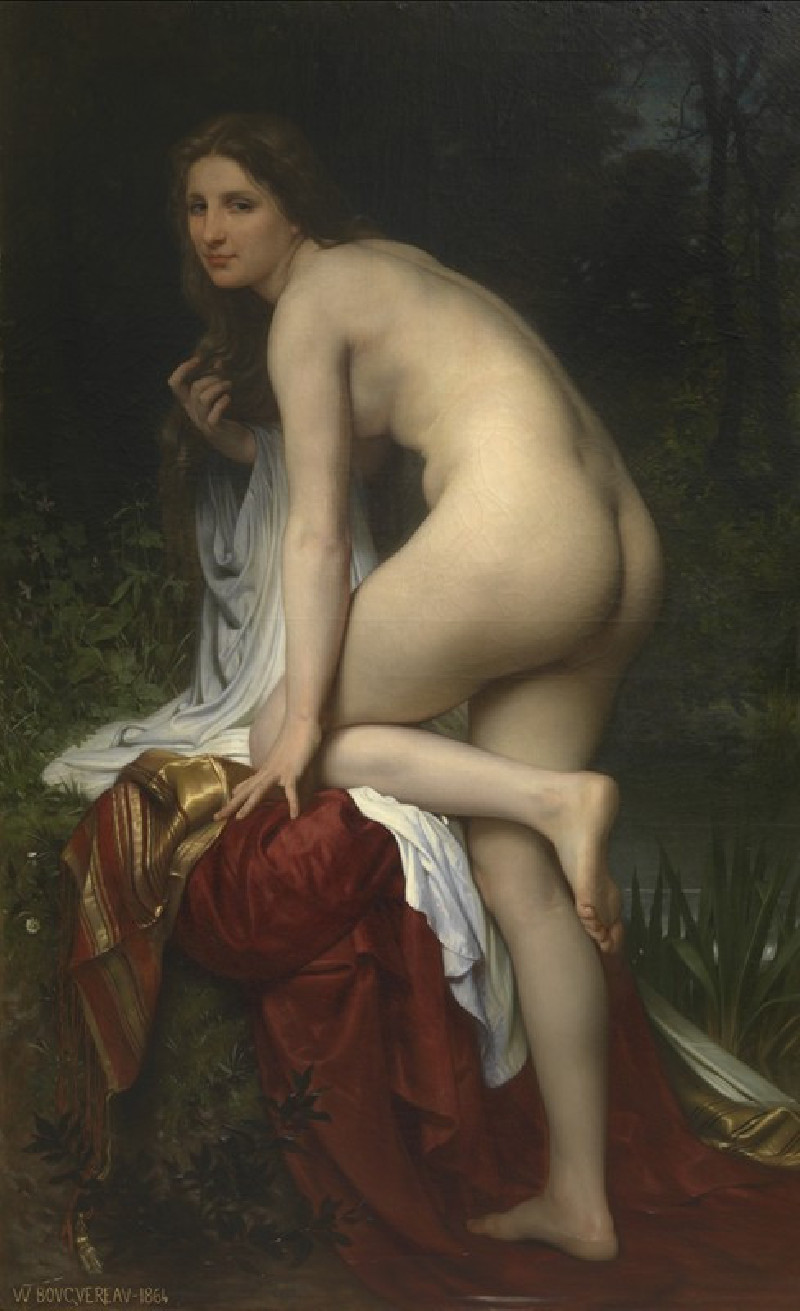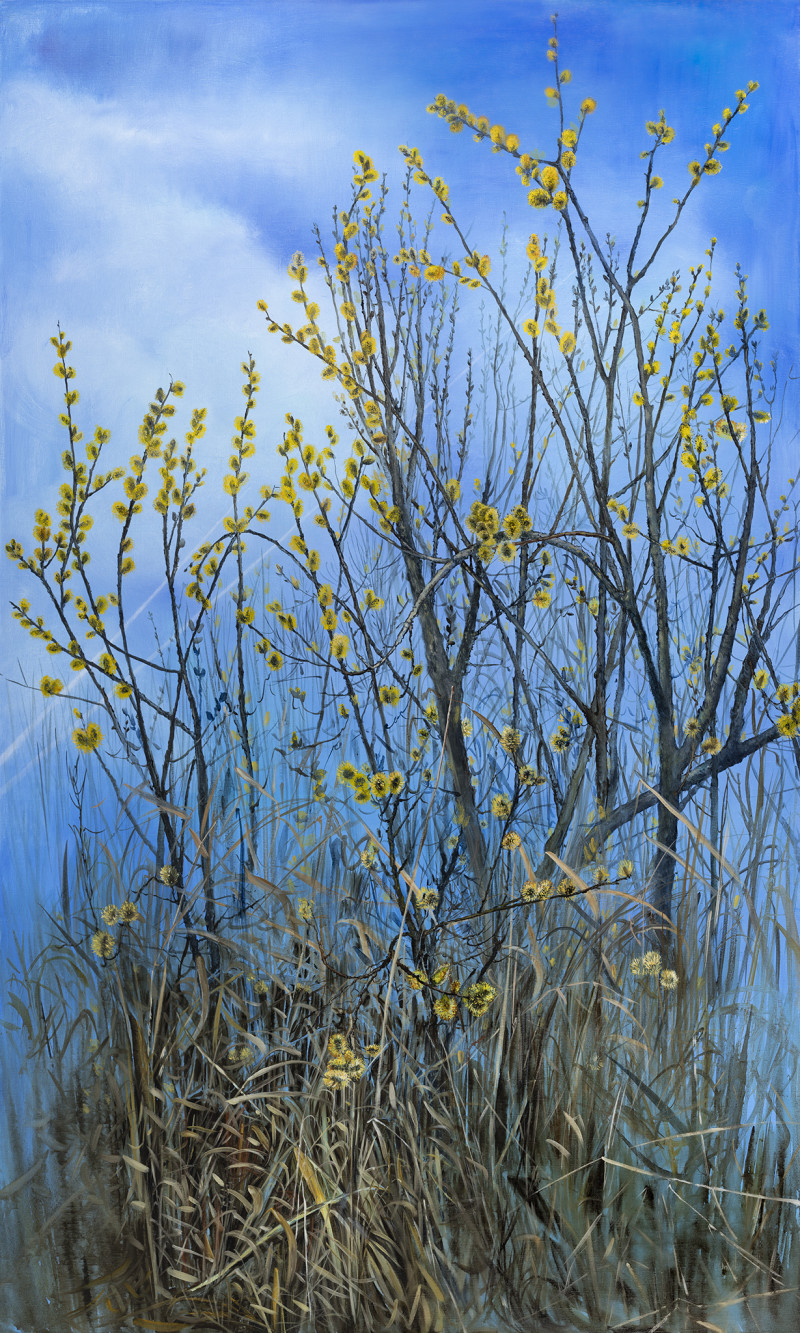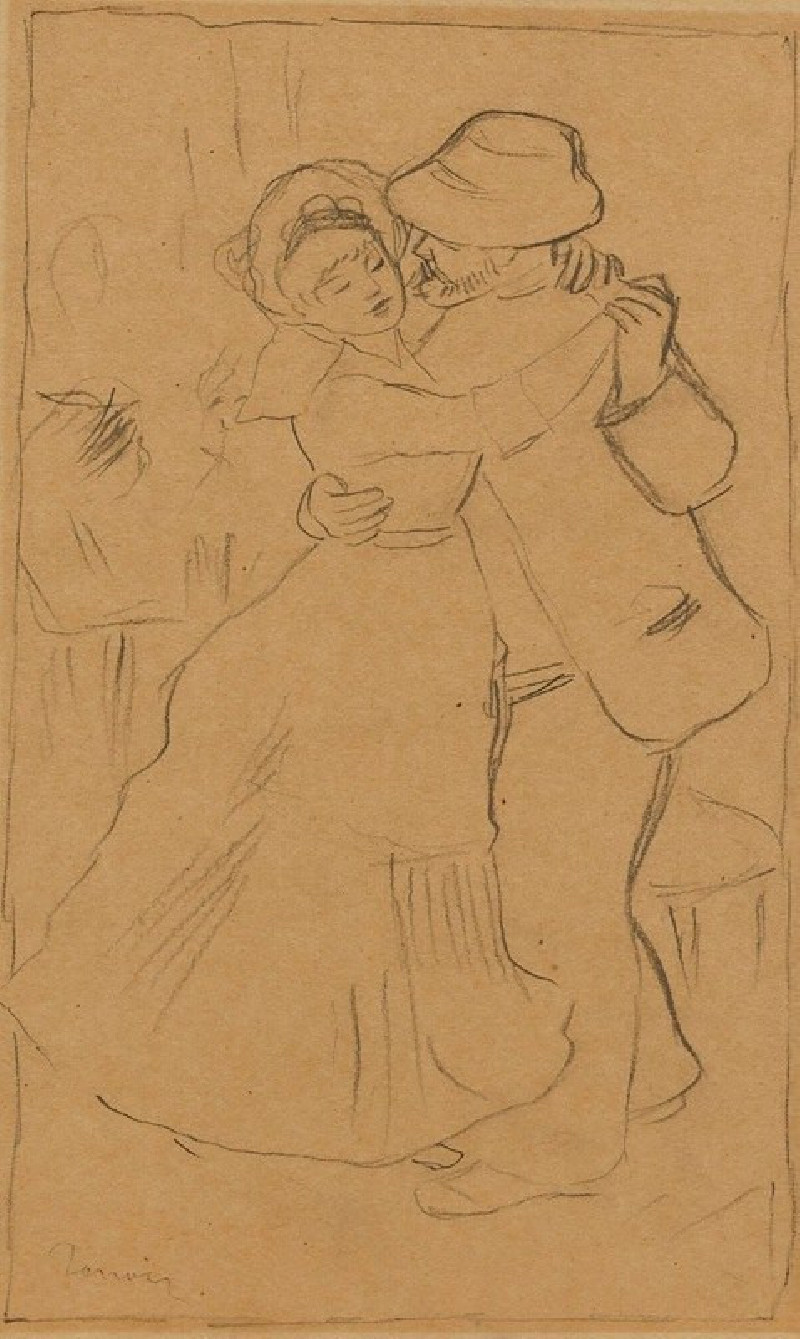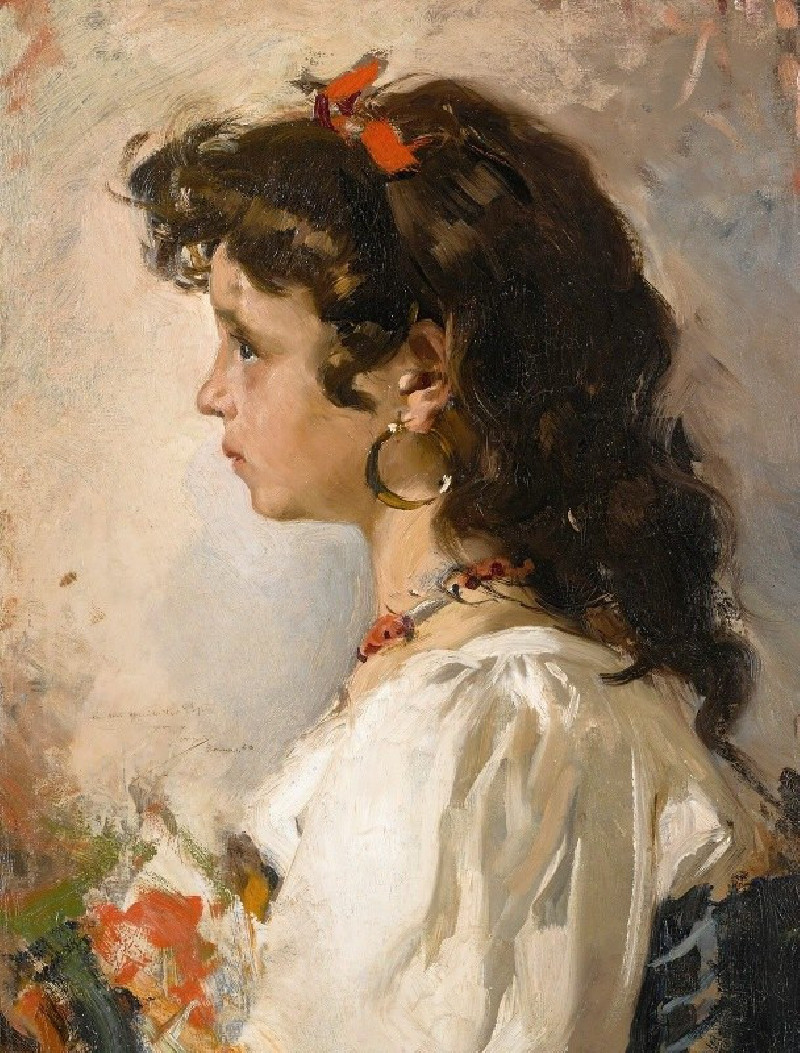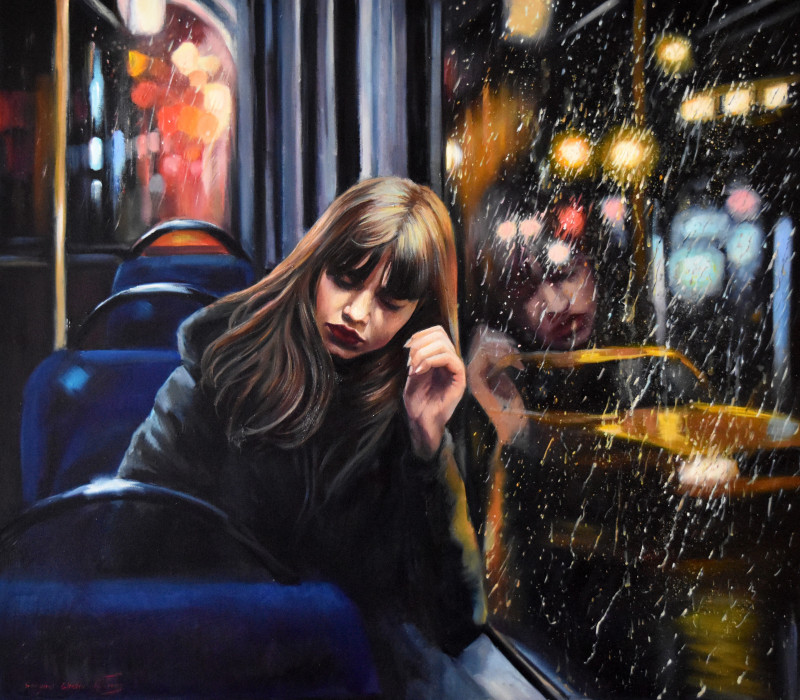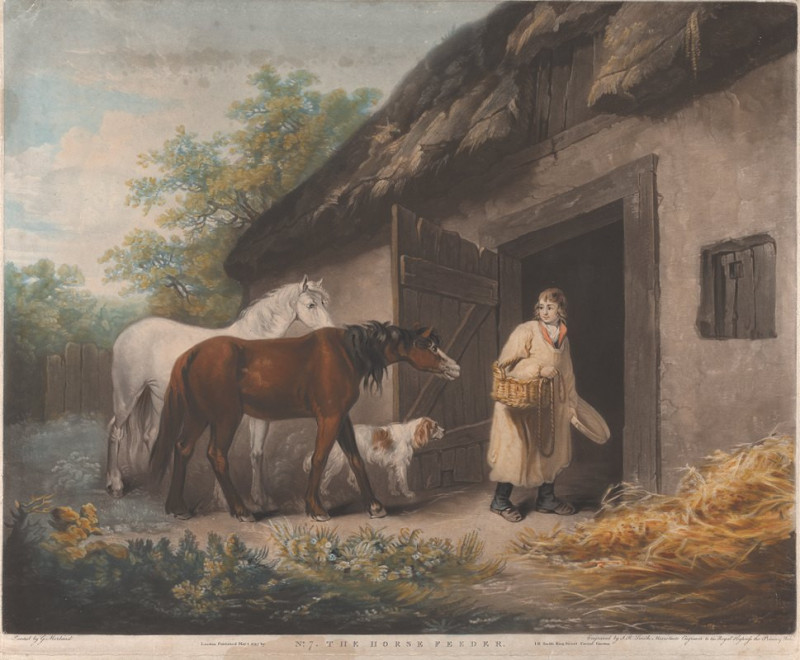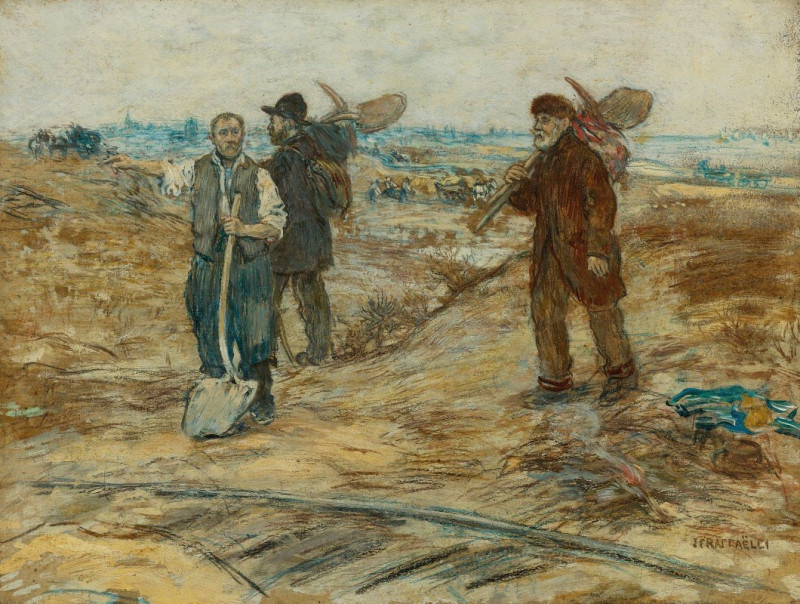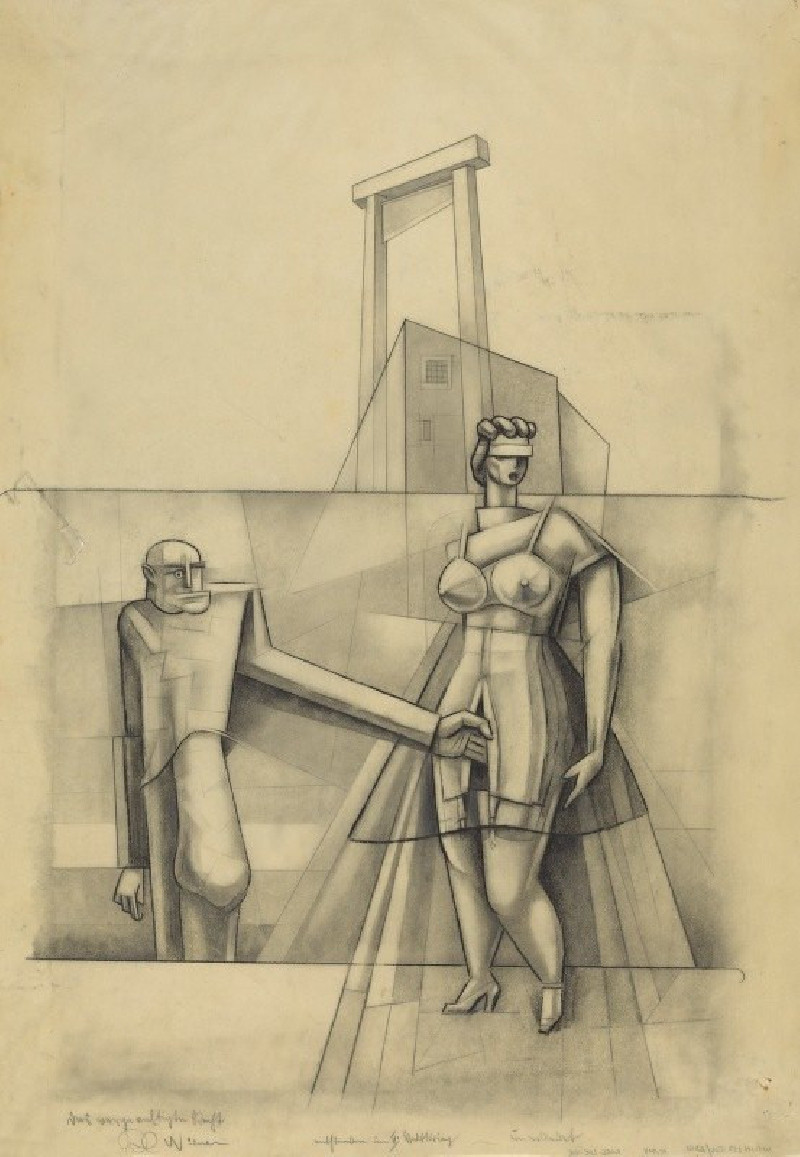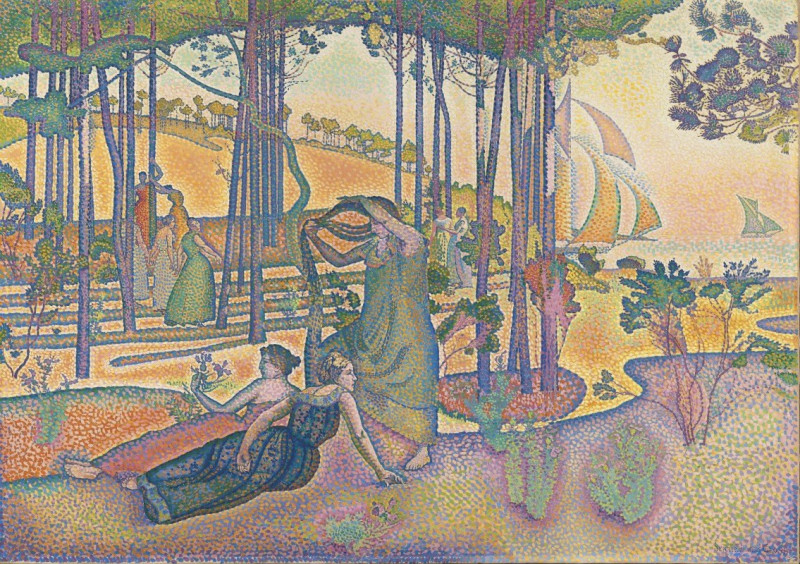Klänge Pl.19 (1913)
Technique: Giclée quality print
Recommended by our customers
More about this artwork
This painting by Wassily Kandinsky, titled "Klänge Pl.19" from 1913, showcases his abstract and vibrant exploration of color and form. It's a rich tapestry of abstract shapes and figures seemingly floating and intertwining with each other across a canvas divided by bold colors of red, blue, yellow and hints of green. The forms do not clearly depict any real-world objects but instead suggest a dreamlike or mystical gathering, which might represent various sounds or musical tones—correlating to Kandinsky's known synesthetic experiences, where he perceived colors in response to music.The composition is lively, with a rhythmic quality that beautifully aligns with Kandinsky's interests in the relationships between art and music. The use of color blocks and the distribution of forms around the canvas create a sense of movement and dynamism. Kandinsky's work from this period often aimed at expressing inner emotions and thought-processes rather than representing the physical world, and this painting is a wonderful illustration of his abstract and expressionist style.
Delivery
Returns
Wassily Wassilyevich Kandinsky was a Russian painter and art theorist. Kandinsky is generally credited as the pioneer of abstract art. Born in Moscow, Kandinsky spent his childhood in Odessa, where he graduated at Grekov Odessa Art school. He enrolled at the University of Moscow, studying law and economics. Successful in his profession—he was offered a professorship (chair of Roman Law) at the University of Dorpat today Tartu, Estonia)—Kandinsky began painting studies (life-drawing, sketching and anatomy) at the age of 30.



